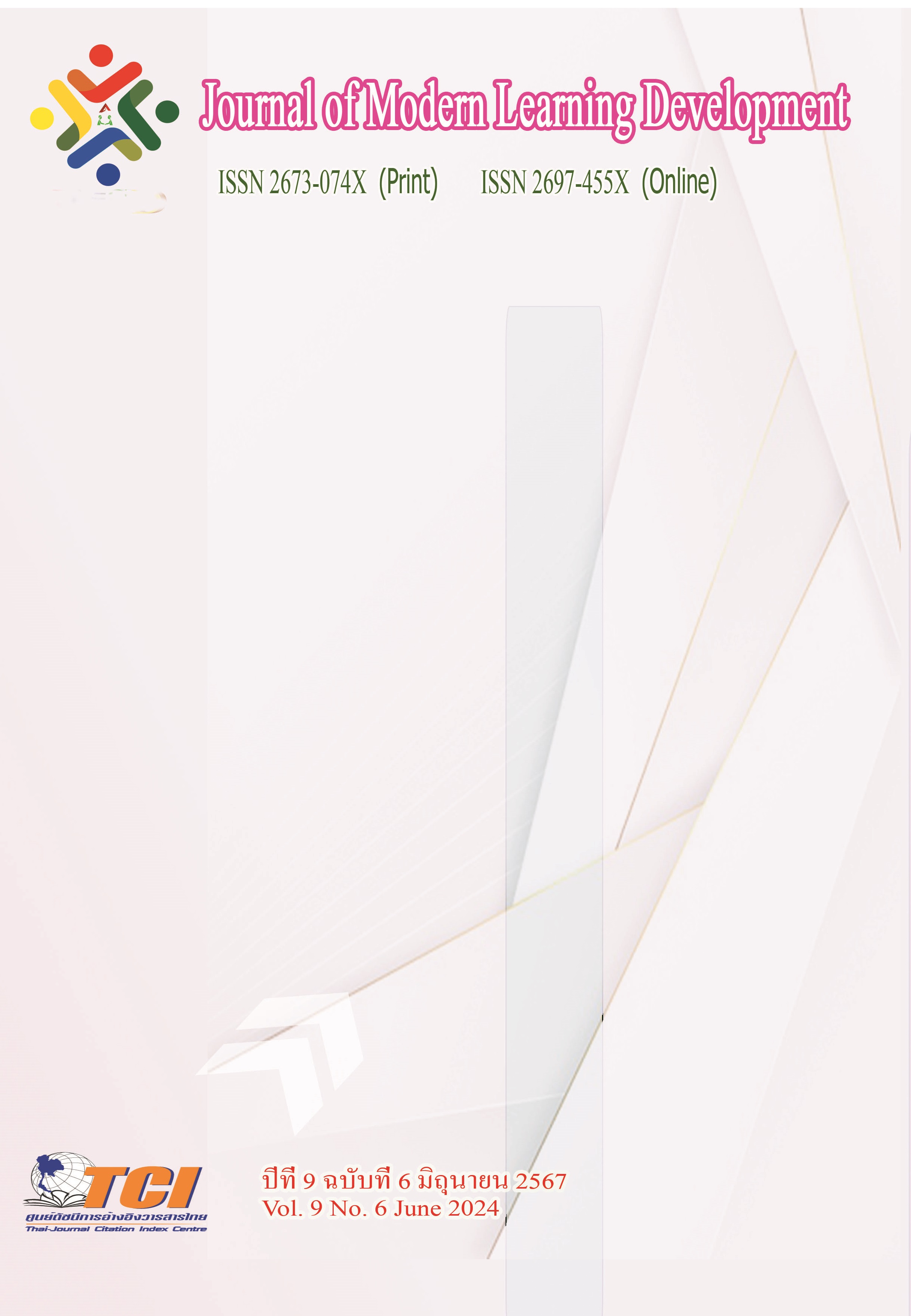An Analysis of Cultural Contents of Thai Textbooks in the People’s Republic of China
Main Article Content
Abstract
This research aimed to analyze and categorize cultural contents of four sets, seventeen volumes, of Thai textbooks published by four publishing houses in People’s Republic of China. The results of findings were as follows: The studied textbooks cover targeted or Thai; learner or Chinese; and international cultures. Thai culture is the main content of the studied textbooks, and its subjects increase by chapters; while contents of Chinese culture decrease. For cultural contents of the texts studied, six areas are found, including 1) contents of Thai culture, sorted as eight groups of artifact; three levels of Thai traditional practices; six types of Thai cultural visions; five groups of Thai communities; three types of Thai cultural persons; and Thai cultural geography. 2) Contents of Chinese culture, sorted as seven types of traditional Chinese culture; three types of reforming Chinese culture; three types of modern Chinese culture; and Chinese cultural geography. 3) International cultures, sorted as two types including foreign language and literature; and foreign festivals. 4) Compound cultures, sorted as five types. 5) Unidentified culture, two issues are found. 6) Comparative cultures, increasingly added in Thai language textbooks lately published.
Article Details
References
ตรึงตา แหลมสมุทร. (2556). การสร้างหนังสือเรียนภาษาไทยเบื้องต้นสำหรับนักศึกษาชาวต่างชาติ.กรุงเทพมหานคร: มหาวิทยาลัยเทคโนโลยีราชมงคลรัตนโกสินทร์.
ปราณี ปราบริปู, ปรัชญา ใจภักดี, พรทิพย์ รักชาติ และจงกล เก็ตมะยูร. (2560). แนวทางการสร้างหนังสือเรียน และหนังสืออ่านเพิ่มเติม. วารสารศึกษาศาสตร์ มสธ. 10 (2), 346-363.
สมเชาว์ เนตรประเสริฐ, สุทิพย์ พูลสวัสดิ์ และนวลจันทร์ โพทา. (2544). การพัฒนาสื่อการเรียนการสอน.กรุงเทพมหานคร: กระทรวงศึกษาธิการ.
Cortazzi, M. and L. Jin. (1999). Cultural mirrors: Materials and methods in the EFL classroom. Culture in Second Language Teaching and Learning, 1 (1), 196-219.
Jiao, Z. (2022). A Study on the Culture and Value Orientation of English Textbooks in Senior High School in the New Era ---- A Case Study of FLTRP Textbooks (2019 Versions). Master’s Thesis. College: Liao Cheng University.
Liu, Y., Lawrence, J. Z., & Stephen, M. (2015). A Study on Cultural Content in College English Textbooks Included in the National “Twelfth Five-Year Plan”. Foreign Language World, 171 (6), 85-90.
Ministry of Education of the People’s Republic of China. (2000). Guidelines on College English Teaching. Shanghai: Shanghai Foreign Language Education Press.
Ministry of Education of the People’s Republic of China. (2019). Regulation of Ordinary Colleges and Universities on the Administration of Teaching Materials. Retrieved From Ministry of Education of the People’s Republic of China website: http://www.moe.gov.cn/srcsite/A26/moe_ 714/202001/t20200107 _414578.html
Moran, P. R. (2009). Teaching Culture: Perspectives in Practice. Beijing: Foreign Language Teaching and Research Press.
Su, Y. & Dong, X. (2021). Problems and Countermeasures in the Construction of Textbooks for Non-common Language Majors in Colleges and Universities in China.Foreign Language Education in China, 52 (4), 77-83.
Yu, L., He, N., & Li, D. (2023). A Summary of the Research on Cultural Content in College English Textbooks of the Recent Decade: Based on CiteSpace Knowledge Map Analysis. Theory and Practice of Contemporary Education, 15 (2), 63-69.
Zhang, H. & Yu, R. (2020). A Study of Cultural Presentation of College English Textbooks. Foreign Language Education in China, 5 (3), 42-48.


